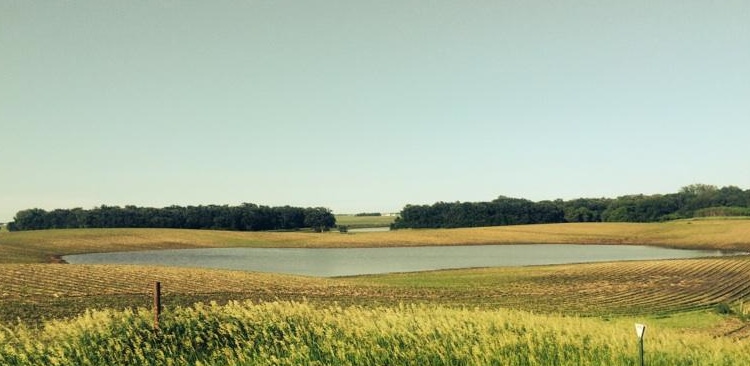June 12, 2015

Summer rains can lead to saturated or flooded soils. Even areas not flooded can become and remain saturated for days or weeks. Survival of corn plants in these scenarios is dependent upon temperature, stage of growth and length of time the soil is saturated. The following factors from Wyffels Hybrids will help you assess the risks and manage for the most positive outcome.
1. Completely submerged corn is at higher risk than partially submerged corn. Partially submerged plants may continue to photosynthesize at limited rates, extending the amount of time they can survive.
2. Extended saturation will increase the risk of injury and death. Soil oxygen is depleted within about 48 hours of soil saturation. Without oxygen, nutrient and water uptake is impaired and root growth is reduced. A general belief is that young corn plants can survive up to 4 days of ponding if temperatures are in the mid-60s or cooler. With warmer temperatures the plants will use the available oxygen faster and likely will not be able to survive as long.
3. Corn younger than V6 is more susceptible to damage from flooding and saturated soils. The plant’s growing point is still below ground. Once water has subsided the health of the growing point can be assessed by splitting the stalk of an affected plant. A healthy growing point will be firm and white or yellow in color. A damaged or dead growing point will be soft and grey or brown in color.
4. Surface crusts could form if water subsides and the soil dries quickly. This will obstruct air exchange into the root zone, making full recovery less likely.
5. Extended periods of saturated soils will negatively affect the overall vigor of the plant. Root health and growth will be affected until the soil dries to normal levels. Poor root development will leave the corn plant more vulnerable to environmental factors later in the season.
6. Wet soil conditions will promote the development of seedling blight diseases, especially Pythium. The highest risk of these diseases will be in poorly drained
Assessment and management
It is best to wait about five days after a flooding event to fully assess your crop. It is likely no field work can be done in this period, and it will allow corn plants time to show signs of recovery. Examine the growing point by splitting the seedlings lengthwise. If you see signs of a healthy growing point and the appearance of fresh leaves from the whorl then the plant may be able to recover a lot of its yield potential. Young corn plants can only tolerate a few days of full submersion, especially with warm temperatures. Corn can recover with minimal impact on yield potential if the plants stay healthy and favorable growing conditions occur.
After enough time has passed, you can properly assess the health of corn plants with a stand evaluation. This tells you whether replant action is necessary. As with any replant situation, it is best to use a formula that takes into account targeted stand, actual stand and possible replant date to evaluate whether replanting would in fact be more profitable than leaving the current stand. Using a replant worksheet or formula will help you to make a management decision based on economics and not on emotion. Many university extension services have a replant decision tool available for use. You can find a replant checklist from Iowa State.
Read more about the impact of saturated soils on young corn from Wyffels.
 You might also like:
You might also like:
Detect crop stress with thermal imaging
You May Also Like




